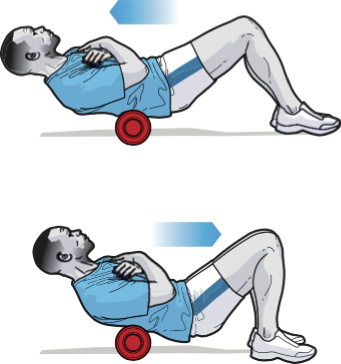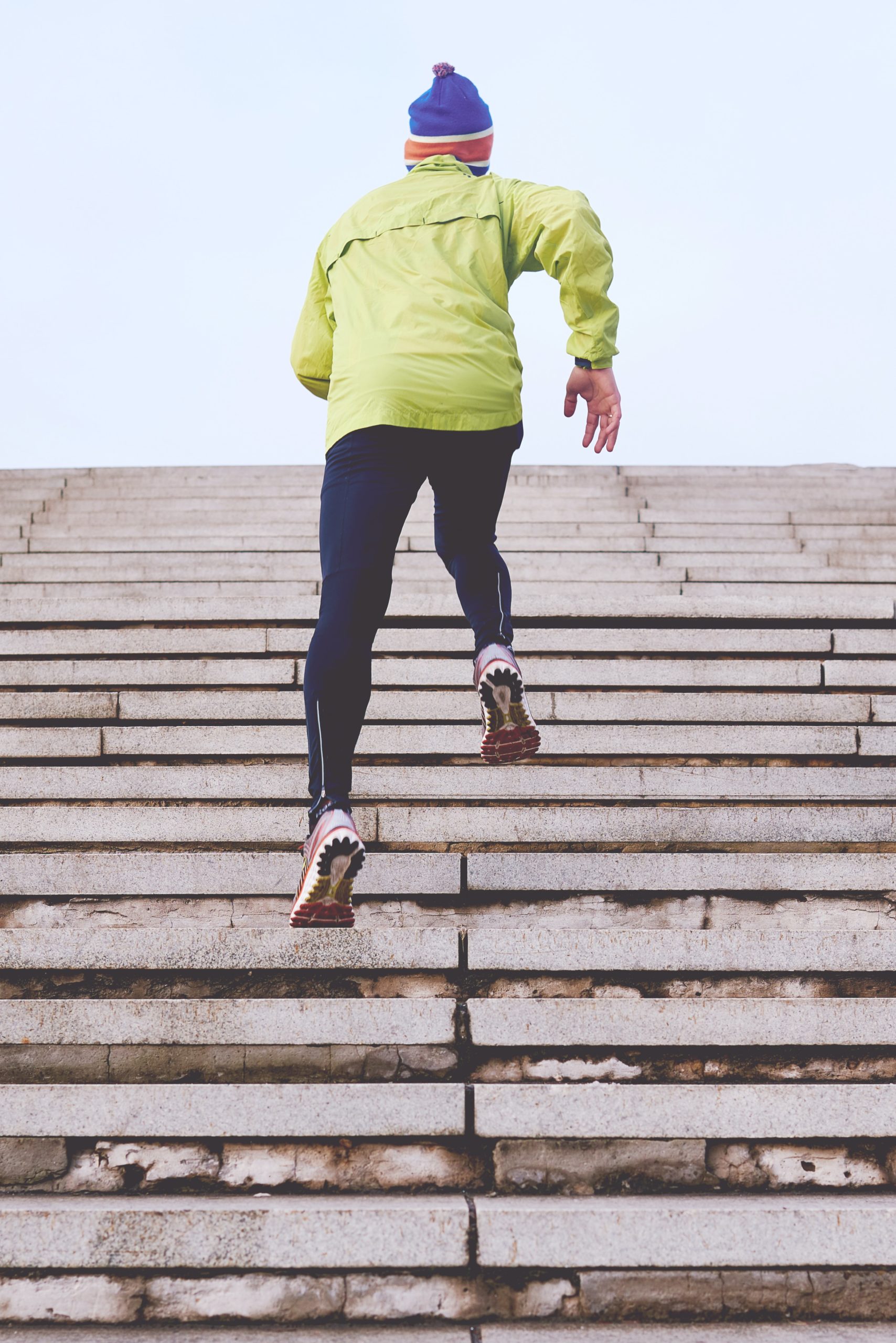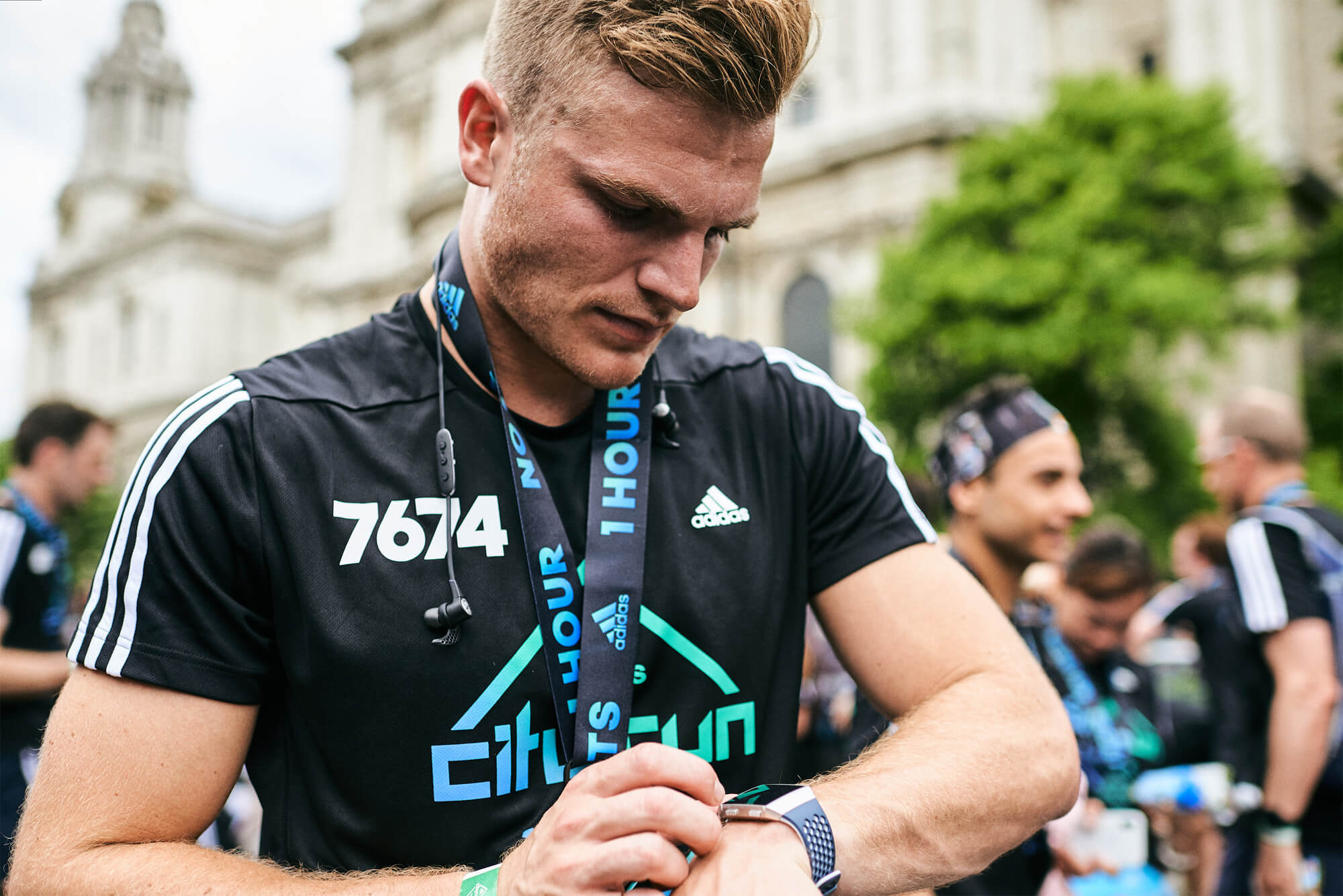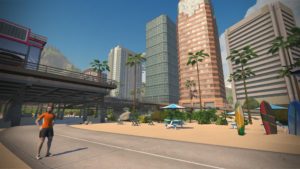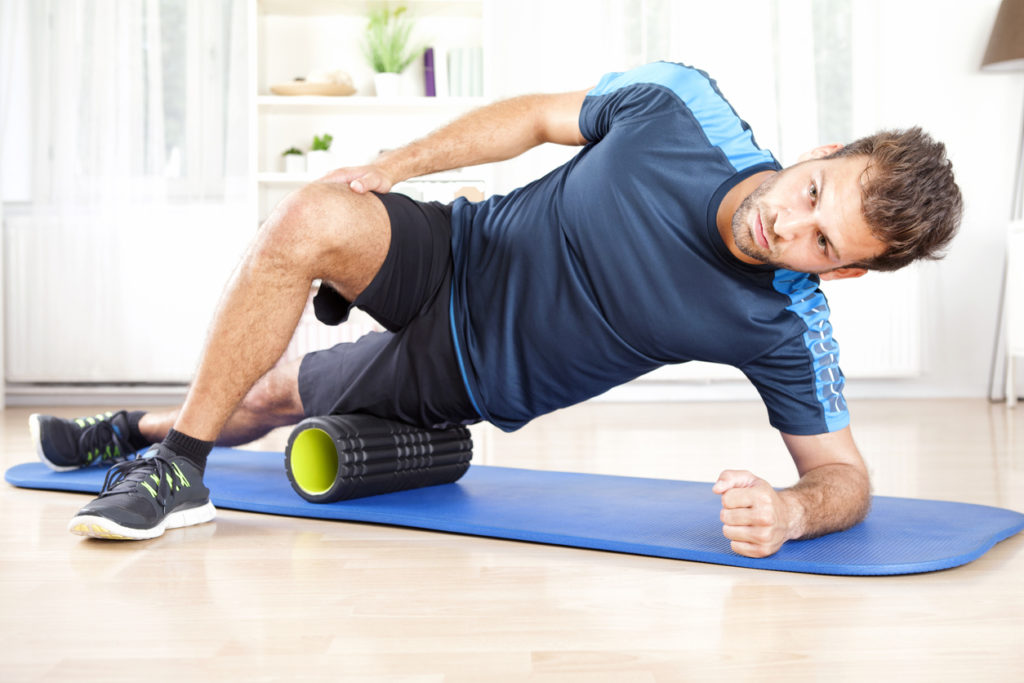
Exercise 1: Foam roll hamstring release
Area trained: Hamstrings
Why do it?
Tight hamstrings can lead to a variety of injuries like lower back pain or knee pain.
Technique:
- Sit with straight legs on the foam roll with your hands behind your body on the floor
- Keep the foam roll where your bottom meets your leg
- Move your body backwards to roll the foam roll down towards your knee
- Never roll over the back of your knee
- Return to the top position
Be safe:
Try to feel where the tightest part of your muscle is and aim to roll forwards and backwards over that point.
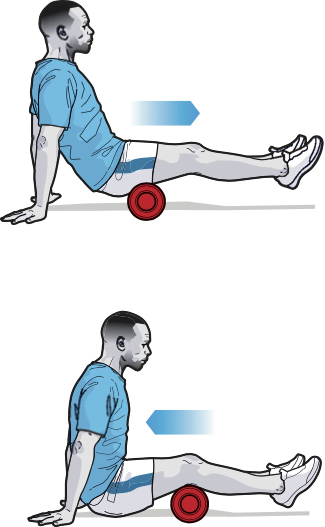
Exercise 2: Foam roll quadriceps release
Area trained: Quadriceps
Why do it?
Stretching is often not enough to keep your thighs supple. By adding foam rolling you will release tension in your muscles.
Technique:
- Lie on your stomach with the foam roll underneath your front thigh with your arms on the floor
- Ensure that the roll is just above our knee cap
- Push your body backward and roll the foam roll up to your top thigh
- Roll back down to your knee
Be safe:
Never roll over your knee cap.
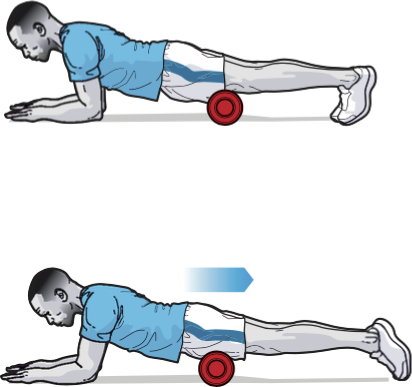
Exercise 3: Foam roll ITB release
Area trained: IT band
Why do it?
Sitting on a bike for a long time can tighten your hamstrings, which can lead to lower back pain
Technique:
- Lie on your side on the foam roll
- Keep the foam roll at the top of your thigh
- Roll the foam roll down towards your knee
- Feel where the ITB is the tightest part and roll forwards and backwards over that point
- Return to the top position
Be safe:
Never roll over your knee.
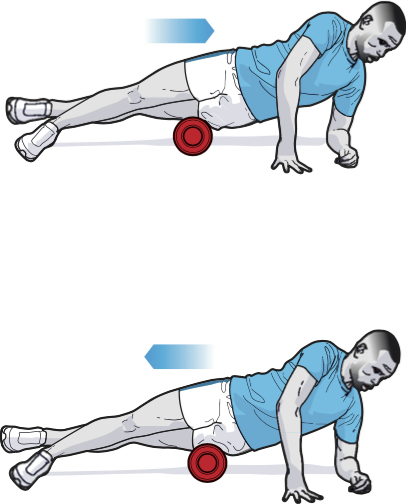
Exercise 4: Foam roll glute release
Area trained: Glutes
Why do it?
Tightness through the muscles in your bottoms can lead to lower back pain when you increase your distance or run for long periods of time.
Technique:
- Sit on the foam roll
- Place your right foot on your left knee
- Place your hands behind you on the floor
- Roll forwards and backwards over the whole muscle
Be safe:
If it is too painful, take more of your body weight on your arms.
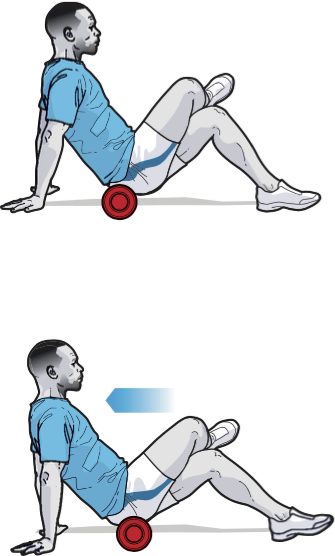
Exercise 5: Foam roll upper back release
Area trained: Upper back (erector spinae)
Why do it?
Working at a desk can cause you to slough which will make your running style less effective. This is a good way to improve your posture after a long day.
Technique:
- Lie on your back and place the foam roll under your upper back just below your neck
- Keep your hands behind your head
- Use your legs to roll the foam roll down to the middle of your spine
- Roll it back up to the top
- If you find a section which is tighter that the rest of your spine spend more time rolling up and down over this section
Be safe:
Be carefully if you have loose clothing on so that it doesn’t get stuck.
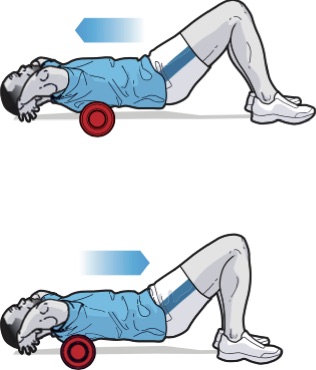
Exercise 6: Foam roll lower back release
Area trained: Upper back muscle (erector spinae)
Why do it?
Improving the mobility in your lower back will improve yours running posture and technique.
Technique:
- Lie on your back and place the foam roll in the small of your back
- Cross your hands on your chest
- Use your legs to roll the foam roll up to the middle of your spine
- Roll it back down
- If you find a section which is tighter that the rest of your spine spend more time rolling up and down over this section
Be safe:
Do slow controlled movements.
